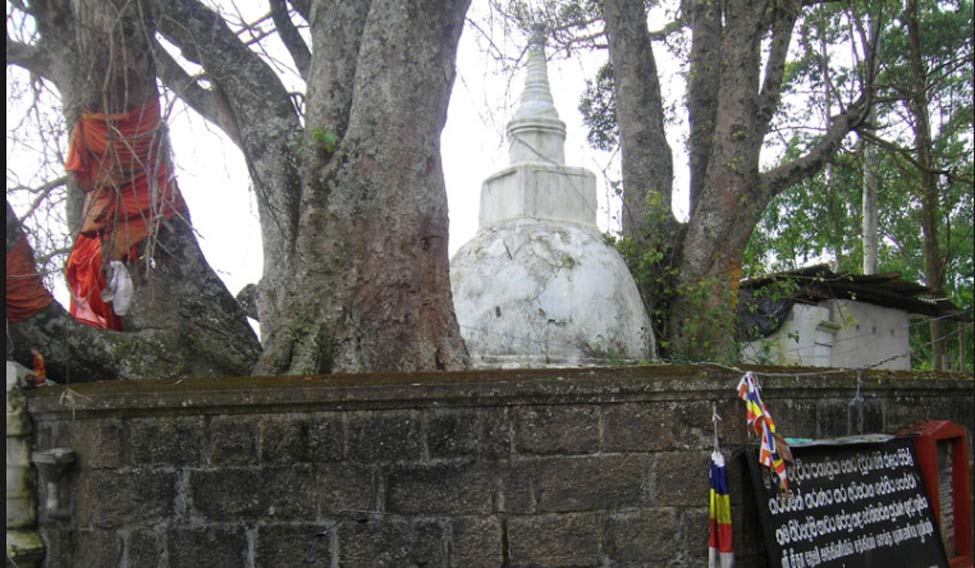Madhya Pradesh government will soon start construction of a Sita Temple in Srilanka. The design and layout of temple, planned in 2010, was jointly finalised by Madhya Pradesh Chief Minister Shivraj Singh and Srilankan Minister of State for Labour, Ravindra Samarvira.
The Srilankan minister was in Bhopal a few days back on an official visit and had held a meeting with Chief Minister Shivraj Singh. The chief minister in a high level meeting, attended by Principal Secretary of Culture Manoj Shrivastava and Principal Secretary S.K. Mishra, finalised that there will be no changes in the original plan made by a Bengaluru architect firm.
The chief minister told the Srilankan minister that architects will soon get in touch with him to obtain necessary permission. The construction will be carried out by Sri Lankan contractors, as per the schedule of rate of PWD Sri Lanka, a government press release said.
BJP ruled Madhya Pradesh state government had allocated a budget of Rs 1 crore and finalised its design and architecture. But, the project hit a roadblock following opposition from natives. Initially, it was to be built by Swami Dayanand Trust, but fearing backlash from the locals the Trust backed out.
Touted as an achievement of the Shivraj Singh government, the temple was proposed at the site where Sita underwent her mythological ‘agni-pariksha’ (fire-test). Though historians believe that such sites are mere inventions for promoting tourism, Sri Lanka Tourism Development Authority (SLTDA) and Madhya Pradesh government are convinced of its authenticity.
In 2010, Shivraj Singh had visited Sri Lanka on the invitation of the Mahabodhi Society. He traveled to Nuwara Eliya region where a temple complex dedicated to deities from Ramayana exists. The temple complex called Sita Eliya has a thick forest of Ashoka trees and a flowing river. It is believed that Sita spent 12 years of her captivity in Ravana's kingdom amidst Ashoka trees. It is claimed that idols of Ram and Sita were found in the flowing stream.
In 1999, Kolkata based Modi foundation gifted new idols. In 2006, president of Seetha Amman Temple Trust, V.S. Radhakrishnan, who is a member of parliament and former minister, visited Nawashahar in Punjab. There an NRI, Ashok Kainth, presented him with granite sculptors of Rama, Sita, Laxman and Hanuman.
Divurumpola, which means a ‘place of oath’ in Sinhala, is located a few kilometers from Sita Eliya. Locals believe that this is the place where Sita underwent the fire-test (agni-pariksha) to prove her purity, after spending 12 years in demon king Ravana's capitivity. The place is much revered by the locals that oaths taken and swears made at this temple, between disputing parties, are accepted even by the legal system.
The place was lying neglected until a few decades back, when it was protected with just a barbed wire. A banyan tree here is reportedly an offshoot planted from the Anuradhapura Bodhi tree, which was planted by Sanghamitra, daughter of King Ashoka, and is an offshoot of Sarnath Bodhi tree in India.
During his visit in 2010, Shivraj Singh had laid the foundation stone for Sita temple in the presence of Srilankan Uva province Chief Minister Shasheendra Rajpakse and BJP leader Chandan Mitra. He also declared that the project would be funded from Madhya Pradesh state exchequer. This will be the second Sita temple in Sri Lanka. He also met President Mahinda Rajpaksa and invited him to inaugurate the first university in the world on Buddhist studies in Madhya Pradesh. Just a year before the assembly polls in September 2012, the state government invited Mahinda Rajpaksa as the chief guest for the foundation laying ceremony of the University of Buddhist and Indic Studies, at Sanchi, 35 kilometres from Bhopal.
On the occasion, the president brought a branch of the Bodhi tree, which was taken from India by Ashoka’s daughter 2400 years back, and planted it in Sanchi. The tree was protected by a platoon of armed battalion round the clock from Tamil extremists who threatened to destroy it. This was a reciprocation for allowing the construction of a Sita temple inside a monastery.





